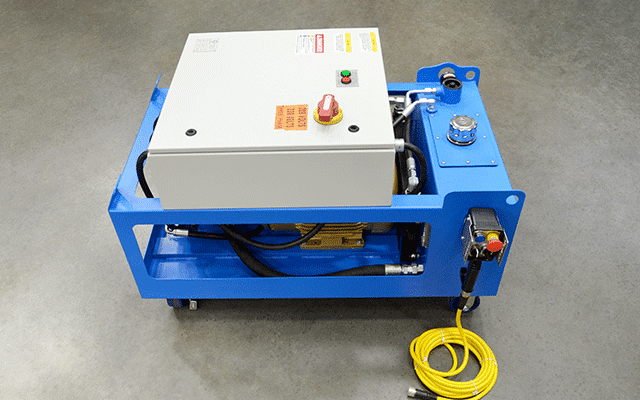CMS issues final rule on durable medical equipment, prosthetics, orthotics and supplies

Photograph: John Fedele/Getty Pictures
In a closing rule issued on Tuesday, the Centers for Medicare and Medicaid Providers has expanded accessibility to sure durable medical devices, these kinds of as constant glucose displays that improve diabetic issues treatment method possibilities for people with Medicare.
The Resilient Clinical Devices, Prosthetics, Orthotics and Materials (DMEPOS) closing rule establishes methodologies for changing the Medicare DMEPOS rate agenda amounts, as effectively as techniques for producing advantage class and payment determinations for new products and providers that are DMEPOS, therapeutic footwear and inserts, surgical dressings, or splints, casts, and other products utilised for reductions of fractures and dislocations under Medicare Component B.
All of this, mentioned CMS, is an effort and hard work to avoid delays in the coverage of these products and providers.
The closing rule also classifies adjunctive constant glucose displays as durable medical devices (DME) under Medicare Component B, and finalizes sure DME payment provisions that have been bundled in two interim closing rules.
Charge Timetable Adjustments
The rule establishes the methodologies for changing the rate agenda payment amounts for DMEPOS products furnished in non-aggressive bidding places (non-CBAs) on or just after the efficient date of the rule, or the date immediately adhering to the length of the COVID-19 general public health emergency – whichever is later – applying the info from the DMEPOS Competitive Bidding Method (CBP).
CMS will continue having to pay suppliers the 50/50 blend of adjusted and unadjusted rate agenda rates for furnishing products and providers in rural and non-contiguous places. The rates, mentioned CMS, have been educated by stakeholder enter. They have highlighted sure greater prices and increased travel distances in sure non-CBAs in contrast to CBAs the exceptional logistical issues and prices of furnishing products to beneficiaries in the non-contiguous places the drastically lessen volume of products furnished in these places vs. CBAs and considerations about fiscal incentives for suppliers in encompassing urban places to continue including outlying rural places in their support places.
CMS mentioned it will continue to observe payments in rural and non-contiguous places and all non-CBAs, as effectively as health outcomes, assignment rates, and other info. The agency may possibly also think about payment methodologies towards DMEPOS products and providers furnished in rural and non-contiguous places and non-CBAs in the context of any long run changes to the DMEPOS CBP.
For contiguous, non-rural places, CMS will be having to pay suppliers 100% of the adjusted rate agenda rates applying info from the DMEPOS CBP. For the previous CBAs, CMS will be having to pay the solitary payment amounts (SPAs) established for the duration of DMEPOS CBP current by an inflation adjustment component on an annual basis.
DME INTERIM PRICING IN THE CARES ACT
The rule also revises the rate agenda amounts for sure DMEPOS products and providers furnished for the duration of the PHE applying a blend of rate agenda amounts adjusted applying info from the DMEPOS CBP and unadjusted rate agenda amounts.
Segment 3712(a) of the CARES Act mandates that the rate agenda amounts for sure products furnished in rural and non-contiguous non-aggressive bidding places be dependent on a 50/50 blend of adjusted and unadjusted rate agenda amounts by the length of the PHE, and area 3712(b) of the CARES Act mandates that the rate agenda amounts for these exact products furnished in all other non-aggressive bidding places be dependent on a seventy five/25 blend of adjusted and unadjusted rate agenda amounts by the length of the PHE.
Reward Category FOR PAYMENT DETERMINATIONS
Furthermore, the rule establishes techniques for producing advantage class determinations and payment determinations for new DMEPOS, therapeutic footwear and inserts, surgical dressings, or splints, casts and other products utilised for reductions of fractures and dislocations under Medicare Component B that permit general public session by general public conferences.
CMS has established techniques for coding and payment determinations for new DMEPOS under Medicare Component B that permit general public session in a method dependable with the techniques established for utilizing coding modifications for ICD-9-CM – which has considering the fact that been changed with ICD-ten-CM as of October 1, 2015. CMS started out applying these techniques for Healthcare Frequent Treatment Coding Procedure (HCPCS) Stage II code requests for products and providers other than DME in 2005.
Ongoing GLUCOSE Screens Below MEDICARE Component B
The closing rule classifies adjunctive constant glucose displays (CGMs) under the Medicare Component B advantage for DME.
But CMS is not finalizing the proposed groups of supplies and accessories and rate agenda amounts for 3 varieties of CGM units. Right after looking at general public remarks, CMS mentioned it isn’t going to think it truly is needed to additional stratify the varieties of CGMs beyond the two groups of non-adjunctive and adjunctive CGMs.
Twitter: @JELagasse
E-mail the writer: [email protected]




